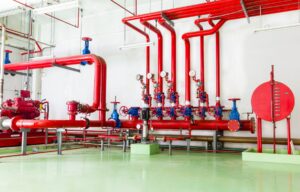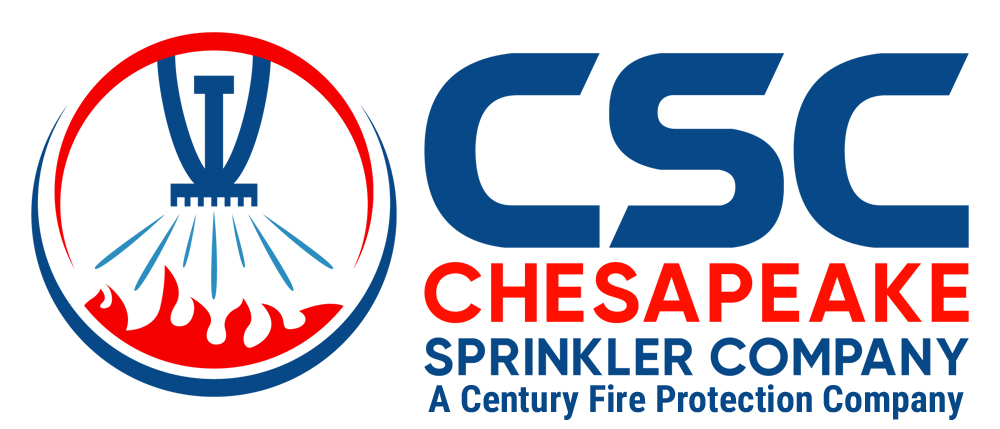
A pre-action fire sprinkler system falls between the fundamental categories of wet pipe, dry pipe, and deluge fire suppression systems.
A pre-action fire sprinkler system falls between the fundamental categories of wet pipe, dry pipe, and deluge fire suppression systems. Pre-action pipes start dry, holding water back using an electronic “pre-action” valve. This system requires two things to happen before the sprinklers activate. First, the independent fire detection system has to detect a fire. When there is a signal or alert, the pre-action valve releases water, turning the system into a wet pipe system. Two, now that the system has released water, one or more sprinkler heads need to release to engage and discharge water. Now that there is a basic understanding of what a pre-action fire sprinkler does, here are more details.
The Benefits of a Pre-Action Fire Sprinkler System
The first benefit of this type of system is that it protects against falsely-triggered sprinkler heads. The two-event sequence before a discharge adds an extra level of protection. Accidental activation results in costly, irreversible property and water damage. In addition, the use of pressurized air or nitrogen in the system enables easy detection of leaks.
Locations such as archival vaults, libraries, fine art storage rooms, and computer data centers have items that require water damage protection. Therefore, a pre-action fire sprinkler system would make sense since it could prevent accidental discharges. In addition, due to the unique fire hazards and challenges that cold storage warehouses present, pre-action systems are beneficial. The water from an accidental release would freeze immediately, creating an expensive and inconvenient problem.
The Difference Between Wet Pipe, Dry Pipe, and Pre-Action Fire Sprinklers
1. Wet Pipe: This system is the most popular because it ranks high in performance and is affordable and low maintenance. The pipes always have readily-accessible water when sprinkler heads detect heat. Water flows through the activated sprinkler and goes to the direct source of the fire. This system is the quickest but runs the risk of freezing in cold temperatures.
2. Dry Pipe: This approach to fire protection works best when you don’t want water to freeze inside the pipes. The pressurized air and nitrogen pipes open a dry pipe valve, allowing water in when a sprinkler head has a trigger. This system does not carry water in the piping until activation. The disadvantage to this technique is the delay in response time between fire ignition, detection, and reaction. Dry piping also elements the water leaks associated with wet pipe systems, but the maintenance is about the same. In addition, sprinkler corrosion is more common in dry pipe systems because the compressed air and oxygen occupy the pipes, thus creating a breeding ground for corrosion.
3. Pre-Action Fire Sprinkler Systems: Like a dry pipe system, this method involves compressed air or nitrogen being in the sprinkler piping instead. However, the pre-action valve controls the flow of water in these two types of systems:
● Single Interlock: One fire detection event, such as heat or smoke detector alerts, occurs. Once this happens, water fills the system. If a sprinkler head activates before this, it will sound trouble, but water won’t discharge.
● Double Interlock: This system requires that a preceding fire detection event happens along with an automatic sprinkler activation before the water fills the pipes. The action of one alarm wouldn’t be enough. This method is only necessary for water-sensitive artifacts that can’t be lost. The disadvantage of this option is that it’s not as cost-effective, there is a delay, and it takes much maintenance.
Chesapeake Sprinkler will point you in the right direction if you’re unsure which fire protection system to use for your commercial establishment. Businesses have several options, but the worst option is to have no fire protection at all.
Contact Chesapeake Sprinkler Company Today!
Chesapeake Sprinkler Company is a leading fire sprinkler contractor in the region. As a full-service fire protection company, we offer design, fabrication, installation, testing, maintenance, and inspection of fire protection systems. Everything you need from your fire suppression specialist.
For more information, please email or call our Odenton location at 410-674-7041, our Ashburn location at 703-729-5150, or for service/maintenance Chesapeake Protection Services at 410-674-7577. For emergencies, call 800-298-3473 (FIRE). Feel free to keep in touch through Facebook, Twitter, or LinkedIn!
